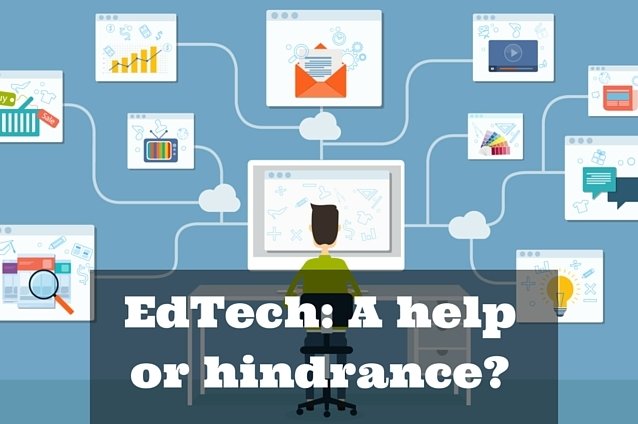The newly published OECD measurement of Digital Skills raises some interesting discussion points regarding the use of technology in the classroom.

“Schools have yet to take advantage of the potential of technology in the classroom to tackle the digital divide and give every student the skills they need in today’s connected world.”
-OECD (2015), Students, Computers and Learning: Making the Connection, PISA, OECD Publishing.
What the OECD report means for EdTech
So has technology failed students? Should we simply pull the plug on it?
Of course not. While the correlation between technology and student performance seems to lend itself well to an interesting headline, the OECD report is not a commentary on technology’s failure to support education; it is an examination of education’s failure to fully utilise technology’s potential:
“The conclusion that emerges is that schools and education systems are, on average, not ready to leverage the potential of technology…The key elements for success are the teachers, school leaders and other decision makers who have the vision, and the ability, to make the connection between students, computers and learning.”
At GoConqr, we believe that technology should be used to engage students and promote active rather than passive learning. With that said, while giving students access to a wealth of online content can be both liberating and exciting, without guidance they risk becoming lost, bored or confused.
3 Steps to positive learning outcomes
So what is the best way of addressing this? We believe that 3 crucial elements are necessary to affect a more positive outcome from the use of technology in the classroom.
1.Learning more by engaging more
First, giving students the tools to create their own content helps them to overcome boredom and encourages active learning. On the GoConqr platform, students and teachers worldwide are creating an average of 10 learning resources per minute. This indicates a high level of enthusiasm among learners for creating resources that can actively deepen their understanding of particular topics.
2.Teacher-directed learning
Secondly, students need direction when sourcing information on the internet. It is far too easy to squander time by watching videos online or checking social media pages. As the OECD study reports:
“ICT is linked to better student performance only in certain contexts, such as when computer software and Internet connections help to increase study time and practice.”
Allowing students to discover resources on dedicated learning platforms is a good compromise. In doing so, they get the same element of discovery and personalised learning, but without falling prey to a slew of online distractions. Websites such as Khan Academy provide relevant learning content that can be engaging and on-topic. Similarly, the library of over 3 million resources on GoConqr allows teachers and students access to a vast knowledge base that’s stocked with relevant learning content.
3.Insight through assessment
Thirdly, any successful learning program needs to have a level of assessment involved. Indeed, this is an area where technology should offer huge support to teachers. Being able to assess and compare knowledge at the end of a learning module is a mainstay of many learning platforms. At GoConqr, our Quiz tool lets teachers quickly test and score students on how well they know a particular topic. Using quizzes at the end of any learning program is a highly effective way of ensuring that students have absorbed and understood the relevant learning materials while using technology to do so. This is just one way that technology can be used to support learning. As the OECD report readily attests:
“Despite the many challenges involved in integrating technology into teaching and learning, digital tools offer a great opportunity for education. Indeed, in many classrooms around the world, technology is used to support quality teaching and student engagement, through collaborative workspaces, remote and virtual labs, or through the many ICT tools that help connect learning to authentic, real-life challenges.”
By encouraging students to actively learn, in the proper environments, and with the right tools and means of assessment, schools can use technology to support and enrich learning – something that an ever-greater numbers of educators and students are coming to realise. Indeed, at GoConqr, we receive over 4,000 new sign-ups every day from students and teachers looking for better ways to actively learn.
We look forward to the continued use of technology in education and fully believe in its capacity to enhance learning for students and help them build the skills they need for the future. To see how others are implementing GoConqr’s suite of tools as part of their learning strategy, watch our video.
